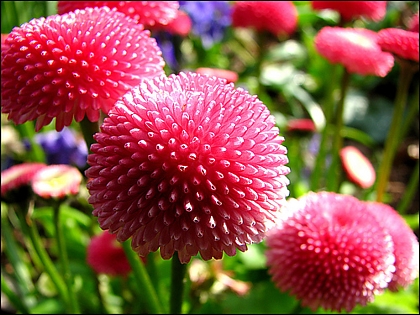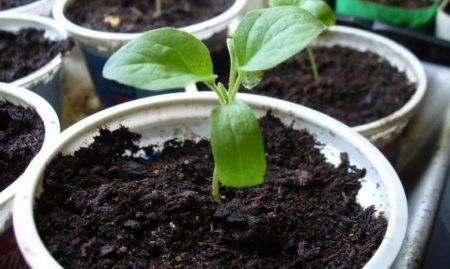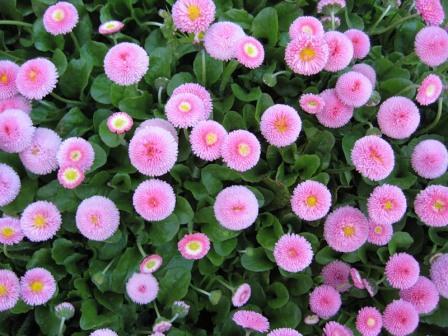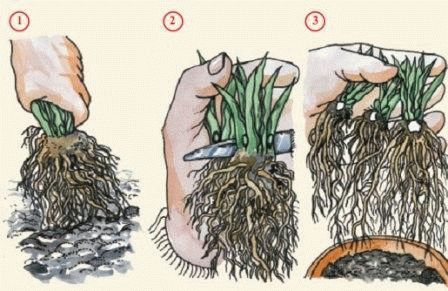 We will deal with the topic: daisy, growing from seeds, when to plant, and how to accelerate flowering seedlings. Daisies are divided into two types. Perennial and annual, the most widespread variety is a perennial daisy, up to 30 cm high. Peduncles up to 30 cm, there are many of them and they are pubescent, with flowers up to 8 cm in diameter, we'll talk about them.
We will deal with the topic: daisy, growing from seeds, when to plant, and how to accelerate flowering seedlings. Daisies are divided into two types. Perennial and annual, the most widespread variety is a perennial daisy, up to 30 cm high. Peduncles up to 30 cm, there are many of them and they are pubescent, with flowers up to 8 cm in diameter, we'll talk about them.
Look how to plant rose seedlings.
Growing seeds in the ground
To grow a daisy, you can sow seeds. By the way, very good daisy seeds can be bought on that website. You can start in June, in moist soil and sprinkle a little on top. The temperature should be 20 degrees, and they also love light. After a week, the sprouts will hatch. Seedlings grow quickly enough, so you will need to dive. They dive into the open ground with a distance of 20 cm from one plant to another. Unfortunately, they will bloom only by next spring. If the flowers are left on the flower beds, they can propagate by self-sowing, all you need to thin out the seedlings.
Seedling method

Some gardeners are more likely to plant daisies in seedlings. Growing in this way, the daisy will bloom this year. Sow seeds in February, the soil can be bought at the store. The conditions are the same as sowing in open ground with a temperature of 20 degrees with bright light. When shoots appear, a reduction of degrees to 15 is necessary.
The area for planting daisies should be in a bright place. They are not whimsical to the soil. Water should not stagnate, they do not like it. Seedlings are planted in May. You need to plant along with an earthen lump. Small pits are made with a distance of 20 cm, with the help of transshipment, seedlings are placed in pits. Tamp tightly (without fanaticism!), And water well.
Daisy Care

The care of the margirite itself is not complicated, you just need to water, loosen the soil around the plants, weed, so that weeds do not grow and feed. Watering should be regular due to their small root system. After watering, gently loosen the soil. Feed at least twice a season with complex fertilizer. All flowers that have faded are best removed. It requires sunlight, because it loves it.
Diseases and Pests
Rarely, this wonderful plant is affected by diseases and pests. If, nevertheless, you notice some oddities in the growth of daisies: the peduncle begins to stretch, the inflorescence grows smaller, and the leaves turn pale and shrink - you need to urgently destroy the bad plants and disinfect the growth site. Can still get powdery mildew, which must be destroyed with special drugs. The plant can suffer from pests. For example, ticks that need to be destroyed by insecticides. Mice can also harm daisies - you need to fight with the help of bait.
Reproduction by dividing the bush

In reproduction, daisies are also used, in addition to seeds, reproduction by cuttings and division of the bush. They are engaged in division in the summer and early fall. For starters, you need to dig up the bushes and divide them into 6 parts, with pinched flowers and buds. Cut off all the leaves and shorten the roots by 6 cm. Plant them in the ground, they will quickly take root. Even if the delenka has no roots, then this is not scary, they will grow back. Cuttings also at such a time as division. The lateral shoots are cut with leafs with a sharp knife, and planted in the ground. Will bloom only next year. As the seeds ripen, they collect - seeds to tear off the baskets and shake the seeds on a newspaper, dry and store them.
Storage
To prepare daisies for the winter, you need to mulch the area with a thick layer of material that will protect the plants, and so they will winter well so that in the spring they wake up and again delight your eye with delicate beauty.
See also: tomato raspberry miracle, reviews, photos.
